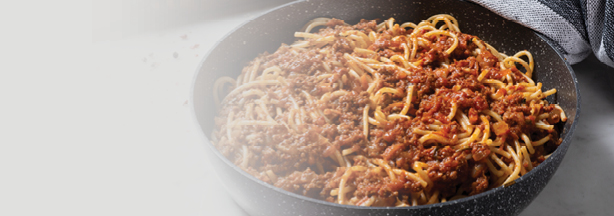Potassium, Phosphorus and the Dialysis Diet
By DaVita® renal dietitian Helen Dorrough, RD
Potassium is a mineral found in most of the foods we eat and is necessary in the diet because it helps with muscle movement and keeping the nervous system healthy. It also helps balance the amount of water in the body. The amount of potassium in the blood is controlled by the kidneys. For people with kidney disease, potassium levels can build up to high levels in the blood. This is called hyperkalemia and can be dangerous for the heart.
Phosphorus is also a mineral we get from eating certain foods. Phosphorus helps build strong bones and teeth. It also helps convert food into energy and helps with metabolism. Kidneys normally release extra phosphorus into the urine; however, kidney disease can prevent the body from getting rid of buildup that causes problems for the bones and heart.
Limiting potassium and phosphorus in the hemodialysis diet
Potassium-rich foods are limited for those on hemodialysis because potassium builds up between dialysis treatments and can cause problems such as weakness, muscle cramps, tiredness, irregular heartbeat and even heart attack. Potassium is found mostly in fruits, vegetables and dairy products. Certain fruits and vegetables are high in potassium and others are lower. However, eating a large amount of a low-potassium food can cause potassium to add up to dangerous levels. Be aware that most foods contain some potassium—meat, poultry, bread, pasta. Butter, margarine and oils are the only foods that are potassium-free.
Foods high in phosphorus are limited for those with chronic kidney disease (CKD) because hemodialysis removes only a small amount of phosphorus from the blood. Unless the amount of phosphorus in the diet is limited, and medicines called phosphorus binders are taken regularly, phosphorus levels can get too high. This can increase the risk of developing complications such as itching, weak and brittle bones and calcium deposits in blood vessels and organs including the heart and lungs. Phosphorus is found in almost all foods although high-protein foods, dairy products, nuts, seeds, dried beans and peas, chocolate, colas and whole grain foods contain the highest amounts.
Potassium and phosphorus in the peritoneal dialysis diet
Because peritoneal dialysis (PD) is performed daily, the diet is a little more liberal. Potassium usually is removed from the body through PD, so most peritoneal dialysis patients are able to keep their potassium at a normal or even low level. Those on PD who have low potassium will generally be instructed to eat foods that are rich in potassium such as tomatoes, orange juice and bananas to get their potassium levels up to a normal range.
On the other hand, phosphorus is not removed well during peritoneal dialysis, so PD patients still need to limit phosphorus in their diets.
Double jeopardy: High-potassium and high-phosphorus foods
New dialysis patients, as well as those that have been on dialysis for years, sometimes have problems remembering which foods contain potassium and which ones have phosphorus. Part of the problem is that some foods are high in both potassium and phosphorus. These “double jeopardy” foods can make things more confusing, but these are the foods that are best to avoid or use in very small amounts.
Most high-potassium foods come from plants. Fruits and vegetables tend to be the high potassium sources.
High-protein foods, such as meats, along with dried beans and peas, tend to be high in phosphorus.
Double jeopardy foods that are high in both potassium and phosphorus include dairy products, nuts, seeds, chocolate and some whole-grain foods. Whole wheat cereals like wheat flakes and raisin bran, and whole grain hot cereals like oatmeal contain more phosphorus and potassium than refined products. These may or may not be limited depending on your kidney function and blood test results. Ask your dietitian for individualized guidelines. Check the list below to see if you are eating any of the double jeopardy foods on the left. Using some of the alternatives listed on the right will help improve your chances of keeping potassium and phosphorus under control.
|
Double Jeopardy Foods (High Potassium & High Phosphorus) |
Alternatives |
|---|---|
|
Cheese |
Vegan rella cheese, low-fat cottage cheese, sprinkle of parmesan cheese (use very small amounts of extra sharp cheeses for the maximum flavor) |
|
Chocolate |
Desserts made with lemon or apple, white cake, rice-crispy treats |
|
Cream Soup |
Broth-based soups made with pureed vegetables or make soups with acceptable milk substitutes |
|
Dried beans and peas |
Green beans, wax beans |
|
Ice Cream |
Sorbet, sherbet, popsicles |
|
Milk |
Almond milk, Rice Dream® original, unenriched rice beverage |
|
Nuts |
Low-salt snack foods including pretzels,tortilla chips, popcorn, crackers, Sun Chips® |
|
Peanut butter |
Low-fat cream cheese, jam or fruit spread |
Eating a dialysis diet low in potassium and phosphorus
Talk to your doctor about your diet and ask his or her advice about consuming foods that contain potassium and phosphorus. Your doctor and renal dietitian is available to help you learn about which foods have potassium and phosphorus, and will review your lab results with you so you know how much you can eat and stay healthy.
Related articles on DaVita.com

Download
Cookbooks
Access free kidney-friendly cookbooks from DaVita dietitians.
1,000,000+ Enjoyed So Far!

Eating Out
Guides
See kidney-friendly food and drink choices to consider when eating out at your favorite restaurants. Choose from 12 cuisine types.
